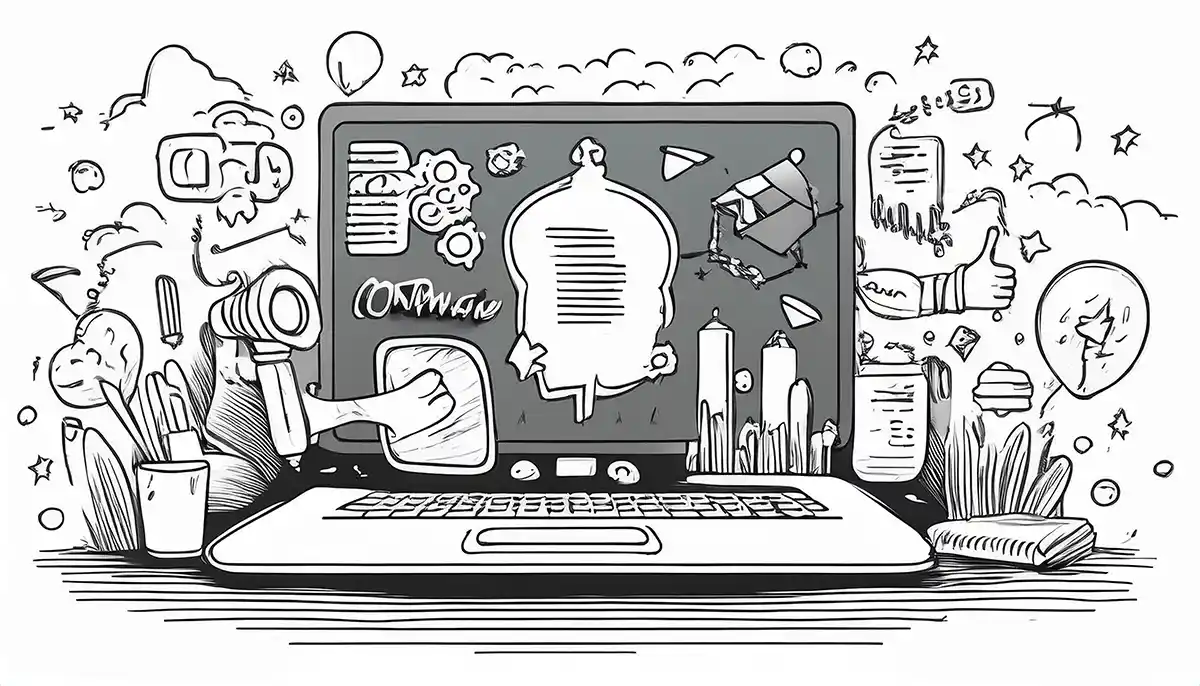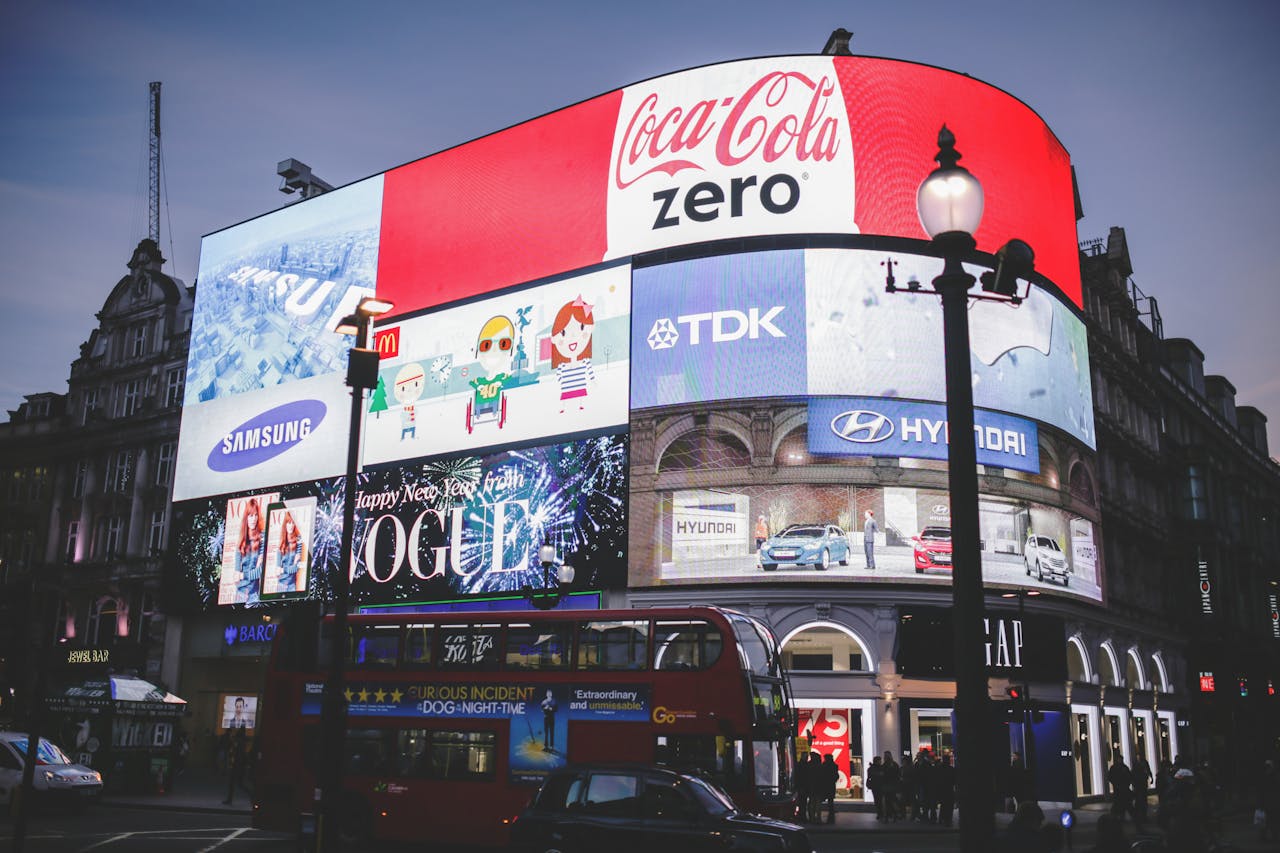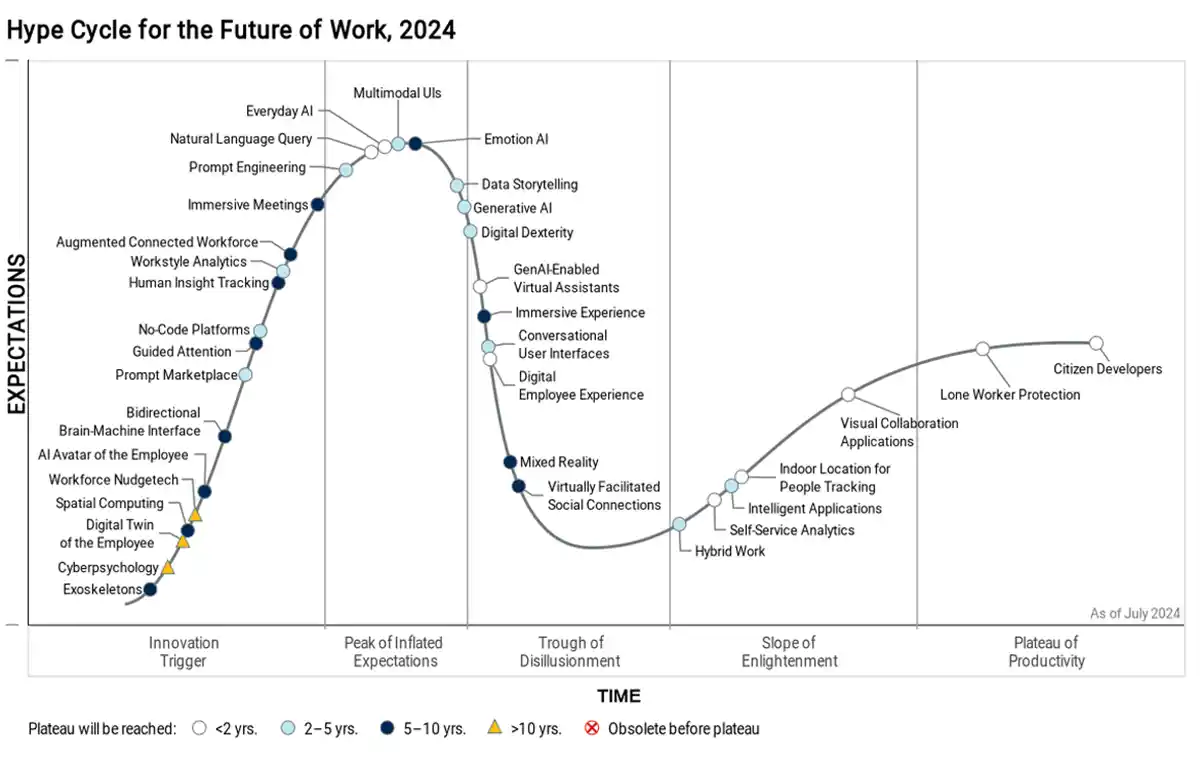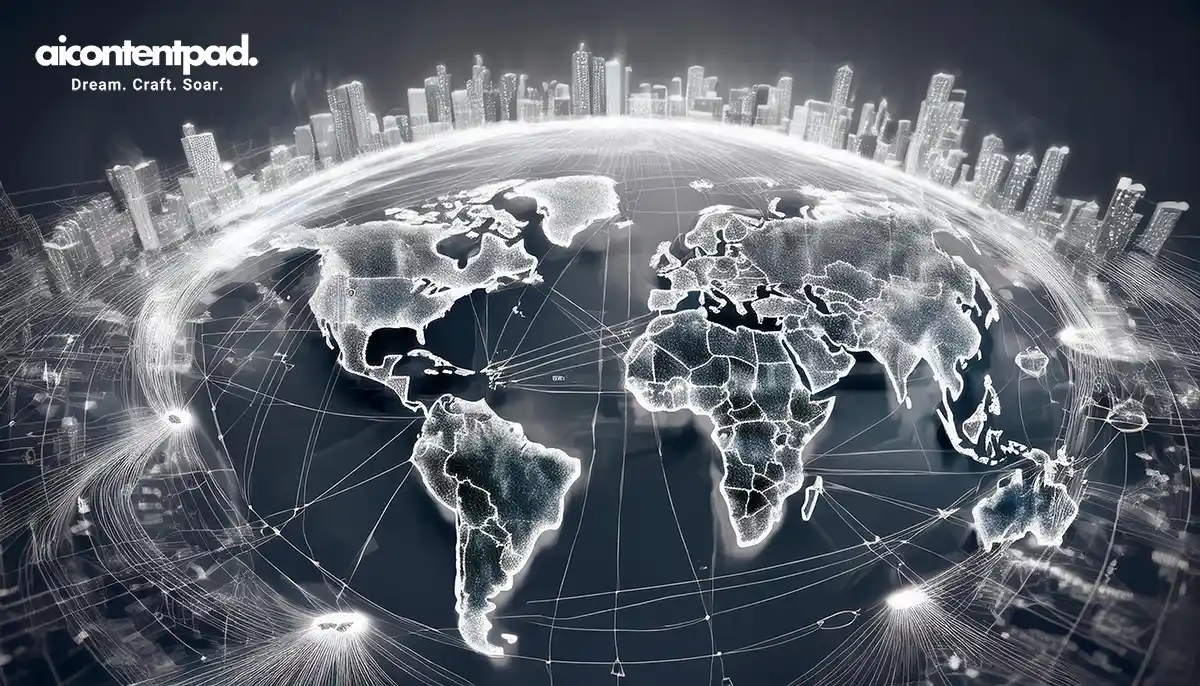AI Upends the Advertising Business: A Deep Dive into AIContentPad’s Disruptive Potential
Introduction
In recent years, artificial intelligence (AI) has transformed multiple industries, from healthcare to finance.
The advertising industry is experiencing a similar disruption as AI technologies redefine how ads are conceptualized, created, and distributed. This transformation is not incremental—it’s revolutionary.
AI is reshaping the core of advertising, allowing marketers to produce hyper-personalized content at unprecedented speeds and scale with Branch Models.
One AI tool at the forefront of this transformation is AIContentPad, a comprehensive platform that automates and optimizes ad creation across various media formats.
This article explores how AIContentPad is revolutionizing advertising, disrupting traditional methods, and setting the stage for the future.
Emily had always believed in tried-and-true methods. As the marketing director of TitanEdge Manufacturing, a leader in advanced aerospace and precision engineering, her campaigns focused on traditional advertising channels. Billboards, magazine spreads in glossy industry publications, and even high-production television spots consumed her budget. For years, this strategy worked. The company’s established reputation in the market made her feel that sticking to what worked would continue driving results.
But then, the market shifted. Competition stiffened, and customers began expecting more personalized, dynamic engagement. Emily’s once well-oiled marketing machine started showing signs of strain. Despite spending more, the return on investment began to shrink. Her advertising budget ballooned each quarter, but the leads needed to follow suit. By the end of the fiscal year, she was facing a hard truth: the traditional ways weren’t cutting it anymore.
Emily felt the pressure mounting. At an executive meeting, the CFO, eyebrows raised over the balance sheet, asked her directly, “What’s the plan? How do we reverse this?” Emily wasn’t sure. She had pushed hard into all the familiar channels, but they weren’t delivering as they used to. There was no way to keep spending at that level and expect a different outcome. What happened next?
Then, one afternoon, Emily bumped into Sabine, TitanEdge’s new technology strategist. She was a forward-thinking visionary who worked closely with the R&D team to automate production workflows. Over a casual conversation in the break room, Sabine asked her about her marketing struggles. She explained the growing costs, the static returns, and her frustration with the difficulty of creating engaging content at scale for a highly technical audience.
“That’s where you’re missing out,” Sabine said with a smile. “You’re still doing everything the old way. Have you heard of AIContentPad?”
Emily blinked. “AIContentPad? What’s that?”
“It’s an AI-powered content generation platform. It creates personalized, SEO-optimized content, videos, and even dynamic advertisements in a fraction of the time. Not only that, but it adjusts based on user engagement and trends, making sure you’re always hitting the right message at the right time.” Sabine explained how AIContentPad transformed content marketing by producing high-quality, human-like content at scale tailored to every customer persona without the overhead costs of traditional methods.
Emily was skeptical but intrigued. “So, this thing will save me from spending more?”
Sabine chuckled. “More than save you. It’ll make your budget work smarter, not harder. You’ll be able to spend less while generating higher returns.”
The next week, after some research and a lengthy demo, Emily gave AIContentPad a trial run. She still wasn’t convinced an AI could replace the craftsmanship that went into their high-production ad spots, but with the numbers tanking, she had no choice but to experiment.
The results blew her away.
Within weeks, the company’s website was populated with highly targeted blog posts that attracted new leads from niche industries they’d been struggling to reach.
AIContentPad dynamically adjusted messaging based on real-time performance, fine-tuning ads to resonate with engineers, procurement managers, and decision-makers alike.
Instead of spending tens of thousands on a billboard that may or may not catch the eye of their next client, AIContentPad generated dozens of personalized email campaigns, video ads, and product descriptions—all aligned with TitanEdge’s brand voice.
And the cost? A fraction of what she had spent before.
By the end of the quarter, Emily presented her new marketing report to the executive team. This time, the CFO was grinning. Leads were up by 30%, while costs were down by almost half. Emily stabilized the marketing budget and created a scalable, efficient strategy for the future.
With AIContentPad, Emily transformed TitanEdge’s marketing approach. What once seemed like a mountain of challenges became an opportunity to innovate and lead. She no longer feared exploding budgets. Instead, she looked forward to continuously evolving campaigns, all guided by intelligent, data-driven content creation. Emily had entered a new marketing era and was ready to lead the charge.
1. The Current State of the Advertising Industry

1.1 Traditional Advertising Methods
Before the rise of AI, the advertising industry operated in a labor-intensive, manual fashion. Creative agencies, copywriters, and media buyers played pivotal roles in conceptualizing campaigns and bringing them to market.
The process required weeks or months and involved brainstorming sessions, concept development, draft revisions, and media negotiations.
Advertising campaigns were static, often delivering a singular message to a broad audience, with little ability to personalize or adapt content dynamically.
Television, print, and radio dominated the traditional advertising landscape. While these are still valuable, they offer limited tools for measuring ads’ real-time impact.
Targeting capabilities were often limited to demographics like age, gender, and income, leaving many gaps in reaching the most relevant consumers.
1.2 Challenges in Traditional Advertising
The traditional approach had several challenges. Campaign costs were high, driven by both creative development and media placement.
The manual processes involved in ad creation and distribution further inflated costs, often making advertising inaccessible for smaller businesses.
Additionally, real-time adaptability could have been more present. If an ad campaign was underperforming, advertisers had few options for course correction mid-campaign without significant additional expenditure.
The cost of developing a traditional TV ad can vary significantly based on multiple factors, including the ad’s complexity, talent, production quality, and media placement.
Typical Range of Total Costs

For a basic 30-second TV ad, you could expect to spend anywhere from $50,000 to $250,000 on production alone.
Adding media buying costs could push the total budget to $100,000 to $1 million for a national campaign, with high-end campaigns easily exceeding $1 million to several million dollars.
Example Cost Tiers:
- Low-budget local ad: $50,000 – $100,000
- Mid-range national ad: $200,000 – $500,000
- High-budget, celebrity-endorsed ad: $1 million – $5 million+
Costs will vary depending on the size of the campaign, the target market, and the scope of production.
See where we are headed?
1.3 Evolution of Digital Advertising
The digital advertising boom in the early 2000s introduced programmatic advertising, allowing brands to target audiences more precisely based on data. We were there at the beginning – remember Roving.com? QUIZ: What is it called today?
The advent of Google Ads and Facebook’s ad platform revolutionized the buying and selling of ads, shifting from a manual process to an automated, data-driven model.
The rise of programmatic advertising allowed advertisers to optimize ad placements in real time, enhancing targeting precision.
However, even this evolution required a combination of manual inputs and ongoing adjustments to maintain optimal performance.
2. AI’s Role in Revolutionizing Advertising

2.1 What AI Brings to the Table
AI has brought transformative capabilities to the advertising world. One of its most significant contributions is personalization at scale.
AI can analyze vast datasets to identify consumer preferences, behavior patterns, and purchasing habits, enabling advertisers to create content tailored to individual segments—even to a single consumer.
Moreover, AI’s speed and efficiency in content creation and ad optimization are game-changing.
AI-powered tools like AIContentPad allow marketers to generate ad copy, visuals, and video content in minutes, dramatically shortening the timeline from concept to execution.
AI also enables real-time analysis and decision-making, giving advertisers unprecedented agility.
AI systems optimize ad spending by continuously monitoring campaign performance and making on-the-fly adjustments based on real-time data, improving ROI while reducing wasted impressions.
2.2 AI-Driven Tools Already in Use
Several AI-driven platforms are already making waves in the industry.
Google Ads and Facebook Ads have integrated AI tools to optimize ad targeting and bidding strategies.
These platforms help advertisers reach their desired audience with minimal manual input, maximizing efficiency.
Content generators are another example of AI’s growing role in advertising.
AI-powered tools can create dynamic, personalized content at scale, automating a process that once took creative teams weeks to complete.
This shift allows advertising agencies and brands to focus on strategy while AI oversees execution.






3. AIContentPad: A Deeper Look
3.1 What is AIContentPad?
AIContentPad is a state-of-the-art AI platform designed to automate the creation and optimization of advertising content across multiple formats. Its key features include text generation, image creation, video, and dynamic personalization.
From now on, you can synergize AI-driven content creation with specialized deep vertical branch models. These models are custom-tailored to your industry, enabling you to hit the ground running and achieve success.
The platform enables advertisers to produce a wide range of content for social media, display ads, and video ads, all tailored to individual audience segments and optimized in real-time.
3.2 How AIContentPad Works
At the heart of AIContentPad are AI/ML algorithms that leverage natural language processing (NLP) and deep learning to create human-like ad copy.
The platform’s image and video generation tools use advanced neural networks to design high-quality visuals.
Additionally, AIContentPad integrates seamlessly with existing advertising platforms such as Google Ads and Facebook Ads, ensuring easy adoption and smooth execution.
AIContentPad continuously learns from the data it processes, allowing it to optimize content and targeting parameters over time.
The platform refines its output by analyzing audience engagement and conversion data, creating more effective advertising content.
3.3 Why It’s Different from Other AI Advertising Tools
AIContentPad stands out for its ease of use and ability to deliver industry-specific applications.
While many AI tools offer generic solutions, AIContentPad tailors its content to specific industries such as technology, retail, and e-commerce. Its intuitive interface makes it accessible for seasoned marketers and small business owners with limited technical skills.
Moreover, AIContentPad’s scalability means it can handle anything from a small business’s social media campaign to an enterprise-level global ad initiative.
4. The Impact of AIContentPad on Content Creation

4.1 Automating Ad Copy and Creative Assets
AIContentPad automates one of the most time-consuming aspects of advertising: ad copy and asset creation. Traditionally, ad agencies would need several revisions before finalizing copy and visuals.
With AIContentPad, the process is instant. The platform generates optimized ad copy and graphic designs in minutes, reducing the burden on creative teams.
This doesn’t mean the end of creative agencies’ work. Rather, it allows them to focus on higher-level strategic thinking and creativity.
AIContentPad handles the repetitive tasks, leaving more room for innovation and experimentation in campaign strategy.
4.2 Personalized Ads at Scale
One of AIContentPad’s standout features is its ability to create hyper-personalized content.
Consumers today demand ads that resonate with them on a personal level. AIContentPad can generate thousands of ad variations tailored to specific audience segments.
This hyper-personalization allows brands to create relevant and engaging ads that speak directly to individual users, driving higher engagement and conversion rates.
Moreover, AIContentPad adapts quickly, tweaking content based on user interactions and preferences. If an ad performs well with a specific audience, the platform can adjust its distribution to maximize impact, ensuring optimal engagement.
4.3 Shortening Campaign Timelines
Traditionally, launching an ad campaign could take weeks, from initial brainstorming sessions to final delivery.
With AIContentPad, those timelines are drastically shortened. The platform allows advertisers to generate creative assets, adjust targeting, and launch campaigns in a fraction of the time it used to take.
For example, a retail brand using AIContentPad reduced its go-to-market time from two weeks to three days.
This agility allows brands to respond quickly to market trends, seasonal events, and competitor activities, ensuring they stay ahead in an increasingly fast-paced environment.
5. AIContentPad’s Effect on Advertising Jobs

5.1 The Shifting Role of Creatives
AIContentPad is changing the role of creatives within ad agencies. While some fear automation will replace human creativity, the reality is more nuanced.
AIContentPad automates repetitive tasks such as writing ad copy or designing basic visuals, freeing up creatives to focus on higher-value tasks.
Creative teams can now spend more time crafting a campaign’s overarching narrative or experimenting with new ideas and formats. But there is so much more to it.
5.2 Job Displacement vs. Job Evolution
One concern surrounding AI is the potential displacement of jobs. However, AIContentPad represents a shift rather than an outright replacement.
New roles are emerging, such as AI content supervisors and data analysts who oversee AI-generated content and ensure it aligns with brand guidelines and campaign objectives.
Additionally, ad agencies are evolving into hybrid models, where human creativity is augmented by AI efficiency.
This symbiotic relationship between humans and machines allows for more innovative campaigns that achieve better results. It’s a new way of doing business.
5.3 Ad Agencies of the Future
Looking forward, ad agencies will need to evolve to stay competitive. Traditional agencies that cling to manual processes will need help to compete with AI-powered agencies that can deliver personalized, data-driven campaigns at scale.
The future agencies will likely operate as hybrid models, combining human creativity with AI automation to produce high-impact, cost-effective campaigns.
6. The Advantages of AIContentPad for Advertisers
6.1 Cost Efficiency
One of AIContentPad’s most significant advantages is its cost efficiency. Advertisers can dramatically reduce their overhead by automating many aspects of ad creation.
Instead of hiring large teams of copywriters, designers, and media buyers, AIContentPad can handle much of the work, delivering a high ROI on marketing spend.
Businesses adopting AIContentPad can save on human resources and production costs, allowing even smaller brands to run sophisticated campaigns that would have been out of reach. Matrix saved 70% on content production in 6 months.
With 12 people working on various content elements at $120,000, the annual salary was $1,440,000. We saved 73% on cost. Now, you do the math.
6.2 Enhanced Targeting and Personalization
AIContentPad’s ability to identify precise target audiences enhances campaign performance.
The platform can use advanced data analytics to pinpoint consumers likely to engage with a brand’s message. This results in higher conversion rates and better overall performance.
For instance, an e-commerce brand using AIContentPad
It increased its conversion rate by 30% through more effective targeting and personalized messaging.
6.3 Data-Driven Decision-Making
AIContentPad provides real-time insights, allowing advertisers to make informed campaign decisions.
These insights reduce the guesswork traditionally involved in media buying and targeting.
By continuously monitoring audience behavior and ad performance, AIContentPad enables brands to optimize their campaigns in real-time, ensuring that ad spend is allocated effectively.
7. Ethical Considerations and Challenges

7.1 Bias in AI-Generated Content
As with any AI system, there is a risk of bias in the content generated by AIContentPad. Algorithms learn from existing datasets; if those datasets are biased, the content produced may also reflect those biases.
Advertisers must ensure their AI systems are trained on diverse datasets to promote ethical advertising and inclusivity.
7.2 Privacy and Data Security
Data privacy is another critical concern in the AI era.
AIContentPad relies on user data to create personalized content. Adverts must follow data privacy laws under regulatory frameworks like GDPR and CCPA.
AIContentPad incorporates strict security protocols to protect user data, but brands need to maintain transparency and ensure consumer trust.
7.3 Balancing Creativity with AI Automation
There is a growing concern about the potential loss of human creativity in a world increasingly driven by AI.
While AIContentPad is highly efficient at generating content, it must partially replace the creative vision and emotional intelligence humans bring to advertising.
Advertisers must find the right balance between human creativity and AI automation, ensuring that campaigns remain engaging and emotionally resonant while benefiting from AI’s efficiency.
8. The Future of Advertising with AIContentPad

8.1 Predictions for AI’s Role in Advertising
AI will become even more prominent in advertising in the next 5-10 years.
We can expect fully autonomous ad creation and delivery, where AI platforms like AIContentPad handle everything from concept development to media buying and performance optimization.
As AI technologies advance, we will see more sophisticated tools capable of creating even more personalized and dynamic real-time content tailored to individual user preferences.
8.2 AIContentPad’s Roadmap and Innovations
Looking ahead, AIContentPad will continue to innovate, expanding its capabilities into new advertising formats such as virtual reality (VR), and augmented reality (AR).
These emerging formats offer new ways for brands to engage with consumers. AIContentPad’s ability to create content for these platforms will further solidify its position as a leader in AI-powered advertising.
Conclusion
AI rapidly changes the advertising industry, and tools like AIContentPad lead the charge.
By automating content creation, enhancing personalization, and providing real-time insights, AIContentPad is revolutionizing how advertisers approach their campaigns.
However, as with any disruptive technology, there are challenges to overcome, including ethical concerns and the balance between automation and creativity.
Ultimately, the future of advertising lies in embracing AI tools like AIContentPad while ensuring that human creativity remains at the heart of every campaign.
Brands that adopt AI now will be better positioned to thrive in the evolving advertising landscape, reaping the benefits of increased efficiency, personalization, and data-driven decision-making.
The time to embrace AI in advertising is now.
AIContentPad offers the perfect opportunity to drive your advertising campaigns into the future, ensuring you stay ahead of the competition while delivering personalized, impactful messages that resonate with your audience.







